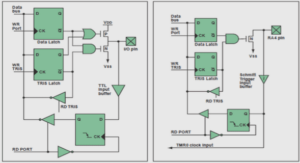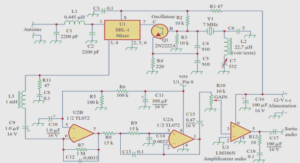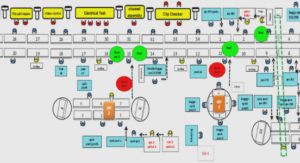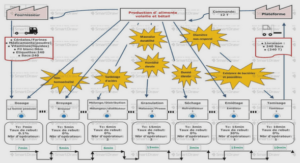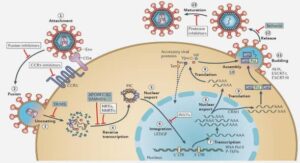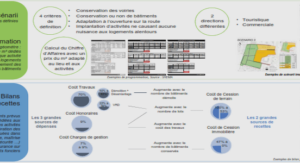Optimal backstepping
Simulation The simulation is performed on a single joint with linear stiffness. The parameters are reported in Table 16.1. The simulation consists in computing several sets of gains using the algorithm and observing if the resulting behavior is correct. In Figure 16.2, 5 simulations are gathered. For each of the simulation, the same cost matrices are given to the ARE solver. The ARE solver returns a vector of state feedback gains and the Monte-Carlos optimizer computes the best set of backstepping gains. Then, the simulation of the backstepping controller is executed with the gains and the resulting trajectories are stored. Because of its stochastic nature, the gain vectors are always different, nonetheless the behavior of the link is very similar for all generated gain sets. The simulation proves that it is possible to select the gains of the backstepping controller based on the gains given by an optimal control approach.
Experiments
In order to evaluate the method experimentally two main challenges are to be tackled. First, the ARE solver must be replaced by a SDRE solver, that is the optimal gains must be computed online. Secondly, the Monte-Carlo optimizer must be modified in order to yield the gains online and without any convergence issues. The various approaches to solve the challenges and their in-depth analysis are too long to be reported in this work and only the most simple approach is reported. It is an approximative method that aims at demonstrating the applicability of the method on a real setup. It has been shown in the SDRE chapter, i. e. in Chapter 14, that the joint stiffness only changes significantly if a load is applied, therefore, the ARE equation can be solved offline if interaction with the finger are prohibited. Moreover, because the backstepping structure does not depend on the linearity of the problem, the optimizer can also be executed offline. The link trajectories obtained for ten distinct experiments are reported in Figure 16.3. The experimental data is reported in Table 16.2. The experiments reveal that the method yields acceptable gains. Small differences can be seen between the trajectories but they are minimal. One of the trajectory is clearly distinct which shows that the optimizer did not find a good solution. 1
Discussion
This chapter presented an algorithm used to select the gain matrices of the backstepping controller. The main purpose of the method is not to build an optimal controller but rather to allow for a systematic tuning of the controller. It is shown that the method can be used to automatically select the gains that are leading to a good performance. Further work could consists in evaluating the performance of the resulting controller w. r. t. a nonlinear optimal controller.
Conclusion
In this thesis, the modeling and the control of a complex and novel hand has been presented. The system is unique in terms of complexity as well as in structure. Indeed, the 19 joints of the hand are driven by 38 motors and 38 nonlinearly flexible tendons. The modeling followed an incremental approach and, starting with the motor modeling, provided a comprehensive and complete model of the system. Each phase of the modeling was verified with simulations and experiments since the models established are the basis for the future work on the system. The specificities of antagonistically tendon driven systems have been presented in details and the required mathematical formalism has been introduced. An important step was the derivation of the coupling matrices, that are a fundamental element of tendon driven system. Indeed, they allow to transform the quantities, such as the stiffness, the torques and the positions, from joint space to tendon space. The knowledge of the link position is paramount to implement most controller. However, in the Awiwi does not provide a link side position sensor, which is one of the key elements for its robustness, thus the finger configuration must be reconstructed from the tendon displacements. The estimation of the link side position in case of the thumb revealled to be particularily challenging and several optimization approaches have been proposed and discussed. An implementation of the link estimation for the thumb has been reported and experimental results confirmed the applicability of the method. The final modeling step consisted in computing a forward kinematic model for the wirst. Indeed, the paths of the tendon are modified by the wrist motions and a compensation scheme is required. The proposed method was verified by comparing simulations and measurements. The control part aimed at identifying a suitable control approach for the finger. In a first step, a motor controller was designed that improves the velocity tracking performance. Following a bottom-up approach, a tendon force controller was designed. However, since the plant is nonlinear, a linearization of the system by feedback was proposed and implemented. The improvement of the step response demonstrated the superiority of a nonlinear controller w. r. t. a linear controller. The next logical step consisted in combining two tendon controllers in order to achieve a joint controller. A first analysis, based on the singular perturbation argument, demonstrated that an joint impedance controller could be constructed. However, the time scale argument depends on the joint stiffness and experiments confirmed that the gain tuning was challenging. A cascaded system analysis removed the need for a time scale separation assumption. The tuning of the controller gains is really tedious for a system such as the Awiwi hand since each of the fingers is different. Therefore, an optimal control approach was proposed in order to simplify the choice of the gains. The approach simplifies the choice of the gains and an extension to the case of a nonlinear plant, known as the SDRE, was proposed. Unfortunately, the method did not guarantee global stability. The second half of the control part focuses on nonlinear control methods. There exist a large number of nonlinear control methods but only a subset is applicable case of a flexible joint. This work focused on one specific method: the integrator backstepping approach. The control method had to be modified twice. First, it had to be adapted to the case of an antagonistic actuation. Second, it was adapted in order to yield an impedance control of the joints. The superiority of the method was demonstrated in experimentally and in simulation. The method guarantees global asymptotic stability and was implemented on the complete hand. The performance of the controller is very satisfying and it is used daily on the platform to support research on grasping. Similar to other method, the tuning of such a controller is tedious. Therefore, the last chapter of the control part proposed an automated gain selection method for the backstepping gain design. The method was implemented and its effectiveness was demonstrated. The control part demonstrated that nonlinear control theory can be successfully applied to the Awiwi hand. It results in a high performance control of the hand. The work reported in the thesis focused on a single joint such that the controller could be compared but it has been systematically applied to the 19 joints of the hand. The controllers have been used to verify the capabilities of the hand in terms of grasping as depicted in Fig. 16.4. The models and controllers developped in this thesis are a very first layer upon which research in grasping and manipulation can be build. The high performance of the control allows to implement new approaches that were not available on other platforms. For example, the influence of the choice of the mechanical stiffness on the grasp stability. I am proud to say that the complete Hand Arm System, used as a leading research platform for dexterous manipulation is currently using the models and the controllers created in this work.

